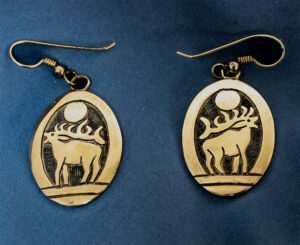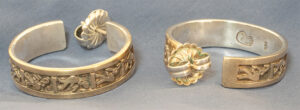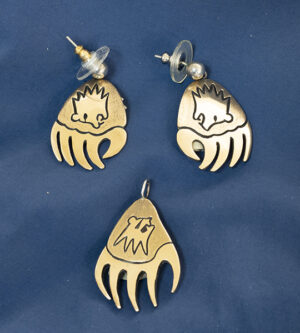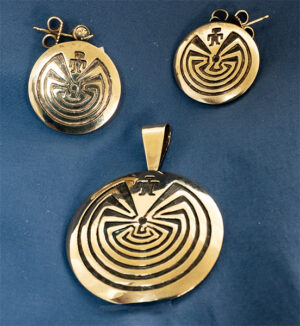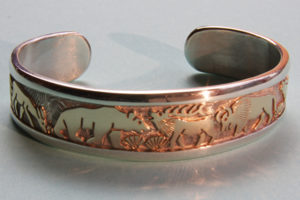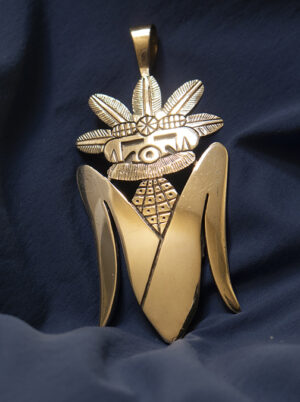Watson Honanie
Born on the south rim of the grand canyon in 1953, Watson Honanie was the 10th of 11 children. His mother is of the Bear Clan. Among the Hopi, the bear is the leader of the animals and birth within this clan carries with it responsibility of leadership within the village. While on the reservation Watson was active in village affairs including the PTA, as chair person for the Head start Program, and for 2 years he acted as president of the local school board. He has been instructing Hopi youth for over ten years as coach for cross-country, basketball, flag football and softball. He is also a certified official for varsity football and basketball and remains active in his Katsina society.
Watson’s father suffered an untimely death in 1959 while working in track maintenance for the Santa Fe Railroad. His mother returned with the family to the Hopi Reservation where Watson attended Hopi Day school. Later, Watson attended boarding school at Phoenix Indian High School. Upon graduation, he returned to the reservation and with encouragement from his uncles, immediately began working as a silversmith.
Watson Honanie created jewelry of gold and silver overlay portraying Hopi culture and ceremonial life. Encouraged by two uncles, both of whom were associated with the Hopi Silvercraft Guild, Watson began making jewelry at an early age. “They (Porter Timeche and the late Fred Kabotie),gave me scraps of silver so I could make small pieces, mostly earrings.”Honanie says. Watson’s uncle, Fred Kabotie, was manager of the Hopi Art& Crafts Guild at the time he first began his apprenticeship as silversmith. After two years he broke from the exclusive marketing agreement at the Guild to sell on his own. By that time, Watson had begun winning awards for his craftsmanship and knew he could do better without the guild limitations.
Watson learned the overlay technique from his brother Phillip. When interviewed Watson said “In 1979, when the cost of silver got so high – 48 to $50 an ounce – I went back to using scraps, but not for making jewelry. I made small Kachinas, about four inches tall, using the lost wax process and the melted silver scraps. I made these miniature Kachinas for about a year, then returned to jewelry.”
McGee’s Indian Art, at Keems Canyon on the Hopi reservation, was one of the first outlets to buy Watson’s silver jewelry. Watson credits Bruce McGee for his encouragement to begin work in gold. And, at a time when he could scarcely afford to purchase the expensive metal, McGee told Watson that he would buy all the jewelry he could produce so long as it was gold over silver. Since 1985, Watson produced, experimented with, and advanced his technique in working gold overlay on sterling. A tribute to his success is measured by a long list of awards and honors.
In 1993 Watson entered a concho belt in competition at the Santa Fe Indian Market. This was the largest single project he had attempted. He was pleasantly surprised with the awards “Best of Class,” “Best of Class Division,” and, according to Watson, he was a single vote short of winning “Best of Show.” Sale of that concho belt on opening day of Market for $12,000 remained one of the most memorable events in his career.
Watson employed free hand drawing in the creation of his jewelry figures. Many of the subjects are similar, but no two rings, pendants or necklaces are ever the same. He considered his work a hobby, yet he was dedicated to 8 hour shifts, often working well past midnight. The hardest thing about making jewelry, he said, is deciding what to make and what designs to use. Among Watson’s most popular figures are the sun, spider woman, corn, animals, (bear, mountain lions, deer, elk, turtle, and wolves), and the eagle. Recent designs incorporated images of ancient rock art drawings (petroglyphs) found throughout northern Arizona. To avoid copy-cats, he constantly innovated with textured surfaces (dremel tooled backgrounds and outline tooling). Watson’s hallmark consists of a bear paw, symbolic of his clan and friendship marks, the small crescent figures within the outline of the paw.
Sadly Watson passed away November 2023. He is survived by his wife, Sara, and two daughters, Kara, and Tia. When his daughters are not attending school, the Honanie family takes up residence in his home village of Shungopavi on the second mesa, or in her home village of Hotevilla on the third mesa. The family cultivates 21 acres growing corn of every color, blue, white, red and yellow. Hopi beans are also an important part of their garden which contribute to the materials used in the village for ceremonial purposes.
Humble in nature, Watson gave from the heart, putting his best effort into every item he made. Tribal Expressions is truly fortunate to include Watson Honanie’s work in our family of artists, and are also proud to have had him as a featured artist and friend.
Showing all 7 results, including child brands

